
![INDEX[0] JFW Textile Fair 2021A/W](images/jfw_textile_fair_2021aw.jpg)
 |
![INDEX[0] JFW Textile Fair 2021A/W](images/jfw_textile_fair_2021aw.jpg) |
![INDEX[1] Post-Show Report - Part 2 -](images/title_index_01.gif) The <JFW JAPAN CREATION 2021 (JFW-JC2021)> and <Premium Textile Japan 2021 Autumn/Winter (PTJ2021AW)> shows organised by the Japan Fashion Week Organization (JFW)) were held on November 18 and 19 at the Tokyo International Forum venue, located in the Yurakucho district of Tokyo. Both ended safety and attracted a higher number of visitors than expected, despite the ongoing COVID-19 pandemic. On this occasion, both shows were held in full compliance with preventive measures, by reducing the number of exhibitors and booths by around 20%, to widen thoroughfares and avoid crowded conditions. The scales of the shows were as follows: <JFW-JC> 47 entries, 242 companies/168.9 booths (*Previous yr.: 84 entries, 294 companies/210.3 booths) <PTJ> 66 entries/92.75 booths (*Previous yr.: 85 entries/116.5 booths) The total number of visitors recorded was 12,626 (previous yr.: 16,811), which exceeded our expectation, despite the circumstances. The apparel industry has been struggling, significantly affected by the ongoing impact of COVID-19 throughout this year and textile manufacturers had virtually no platforms via which to showcase their fabrics for the following season, due to cancelled textile shows. Accordingly, the shows held were awash with enthusiastic negotiations throughout as well as a wealth of buyer feedback: ‘We want to see new materials.’ 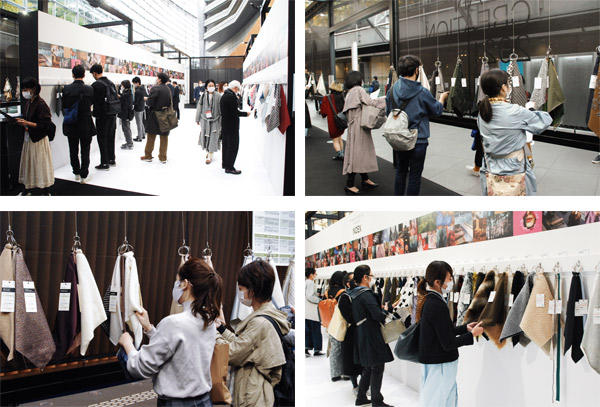 [Show period] Nov. 18-19, 2020 (Wed. & Thu.) [Venue] Tokyo International Forum / Exhibition hall [Organiser] Japan Fashion Week Organization [No. of exhibitors] JFW-JC2021: 47 entries, 242 companies/168.9 booth nos. PTJ2021AW: 66 entries, 92.75 booths [No. of visitors] 12,626 (*Previous year: 16,811) Our post-show report of the JFW-JC2021, PTJ2021AW fairs will be distributed in two editions, Parts 1 and 2. Part.1 :Back number >>> • Visitors’ feedback • Exhibitors’ feedback Part.2 • Textile Workshop - Let’s learn Japan fabrics! - • Pigskin Fashion Show - < PIGGY’S SPECIAL > • The JFW Sustainability Project 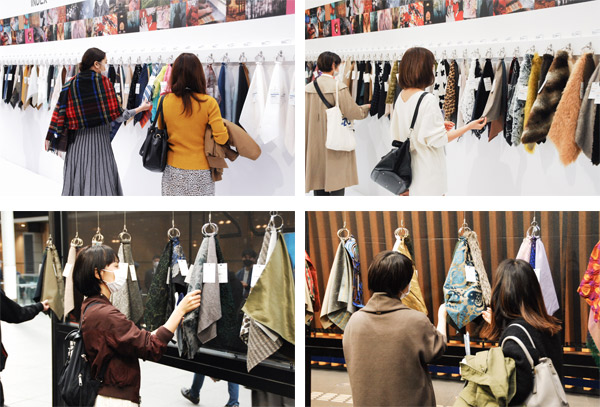 ![INDEX[2] Textile Workshop - Let’s learn Japan fabrics ! -](images/title_index_02.gif) On-site mood conveyed by video The PTJ-related program - < Textile Workshop - Let’s learn Japan fabrics ! - > - was held while ensuring personal distancing among participants and limiting the number of attendees. This event was inspired by a terakoya (literally ‘temple school’) for younger employees belonging to MD/planning sections (with fewer than five years’ working experience), inviting lecturers from among the JFW-JC/PTJ exhibitors representing major Japanese textile-producing regions to lecture on different thematic fabrics and aiming to improve insights and knowledge of Japanese fabrics and textile-producing regions. On both days, a video showing the on-site atmosphere inside factories was projected alongside the lectures, which was well received by participants.  On the first day (Nov. 18), Ms. Mayumi Kuyama (JFW Textile Coordinator) and Mr. Tetsuya Makita (Director/Factory Manager of MAKITA-SHOTEN CO., LTD., Gunnai Region, Yamanashi Prefecture) were invited for the lectures. During the first section (basic lecture), Ms. Kuyama introduced ‘the major textile regions in Japan’, then focused on explaining the chosen region: ‘The KIRYU region is known for its sericulture and used to produce materials used for kimonos and obi fabrics in standard lengths. It also made its name as the first place in Japan to use rayon. Post-war, the region developed the production of textiles for women’s wear and currently maintains its reputation as a textile producer, including mainly compound jacquard using rayon and synthetic fibres.’ She also went on to explain the questionnaire result concerning the price range, delivery time and additional charge. In terms of basic textile knowledge, she explained the typical weaving structures, namely plain weave, twill and satin weave.  In the second section (lecture on textile regions), Mr. Makita started his lecture by introducing details of his company MAKITA-SHOTEN CO., LTD and how, founded in 1866, it started as a wholesaler of silk lining and is currently engaged in selling umbrella products and producing umbrella material and clothing fabrics. The central and western areas of Yamanashi Prefecture in which Kofu City is located are collectively known as ‘KUNINAKA’, synonymous with long daylight hours and a warm climate, which makes it ideal for cultivating grapes and peaches. Conversely, the eastern area called ‘GUNNAI’ is colder and has shorter daylight hours, but benefits from water from Mount Fuji, which paves the way for textile production. Their specialty products have been developed from KAIKI, which is applied to kimono linings and zabutons (Japanese cushions) and used in linings for suits, curtains, ties, clothing fabrics, bedding, Japanese cushions, stoles, mufflers and umbrella textiles at present. Jacquard textile - the thematic fabric of the lecture - is woven with a jacquard weaving machine, by lifting and lowering warp yarns on the loom. A video filming the weaving machine in their factory to show how it works was also introduced during the lecture. They even introduced an interesting jacquard example, by weaving an ‘UDON Map’, featuring a famous UDON restaurant called ‘Yoshida Udon’ in the locality as well as introducing another weaving machine with a Dobby loom in comparison to the jacquard machine. He explained that although a Dobby loom cannot weave patterns, it weaves faster and can handle plain fabrics, as well as scope for linings and plain umbrella cloths, as different features. Stand-out features of GUNNAI textiles include being yarn-dyed, having a fine yarn count and a high density. Yarn-dyeing resembles the principle of printing colours in terms of expression - by mixing the colours of weft yarns. The tones differ according to the textile angles, which gives the fabric colour depth. He also explained the difficulty in handling the fine-count yarns required to produce high-density woven fabrics, followed by detailed explanations of cut-jacquard, panel-weaving and skein/hank dyeing.  Mr. Makita’s verdict: ‘Although there are skein-dye houses in our local region, they are in decline, due partly to an aging society. Unlike cheese dyeing, the advantage of skein dyeing is scope to dye solely the required quantity and length (in small lots), which makes it sustainable. As yarns become fluffier and denser, skein dyeing fabric offers a premium-feel and a texture otherwise unobtainable by cheese dyeing.’ Feedback from participants included: ‘It was great that we could see the video of the production site.’, ‘It was useful to hear the story of the production on-site.’, ‘Our company relies on overseas productions, but is now reconsidering domestic production due to COVID-19. Having attended this lecture, I have learnt how diverse Japan’s textile regions are and I hope to visit them.’ On the second day (Nov. 19), the second part of the event involved inviting Mr. Masato Kimura, President of NAKATAKA KEORI CO., LTD. (Bishu Region), to lecture on circular and warp knitting. He explained how ‘the BISHU region is situated on well-drained soil where three major rivers converse, which is why cotton cultivation was started and marked the beginning of the Bishu textile region. Wool textiles have flourished here since the early SHOWA era, which eventually saw it emerge as a globally acclaimed wool producer. Knitting has also developed in line with weaving.’  NAKATAKA KEORI CO., LTD. was established in 1912, mainly as a producer of cotton materials in standard lengths, before shifting production to woollen fabrics and starting to produce circular knits from 1973. Their production covers wide-ranging categories including yarn-dyed jacquard, Dobby, check-patterned fabrics as their specialties. Their factory is fully equipped with jacquard weaving machines for circular knits alongside a unique warp-feeding machine, that no other companies possess. Mr. Kimura explained about the three types of knitting: circular knitting, warp knitting and flat knitting and about the differences between single- and double-knit approaches to circular knitting. He then explained the atmosphere of the factory by projecting the video of a raschel machine and showing a knitting needle that he brought for the lecture. He concluded by expressing his thoughts: ‘Presently the overall mood is down and depressed due to the pandemic and the textile regions are striving to overcome the reality of the aging issue, but even so, there are some factories in which young managers have inherited the traditional business and several new activities have got underway. A TV commercial once asked viewers to: ‘Try and touch it - it’s wool.’ Now it is time to ‘Go-To BISHU.’ Please do visit the BISHU region and explain directly what you wish to have and see created.’ Participants’ feedback included: ‘It was the first time I’d seen a knitting needle. The story of the factory is really useful.’ ‘We deal with cut and sewn material, but I have never visited the factory. I felt like visiting someday after watching the video.’ Meanwhile, Mr. Kimura’s post-seminar verdict: ‘The Bishu-made knits meet high expectations and come with added value. However, we cannot sell our products with thoughts alone, so we hope to hear demand closer to consumers.’  ![INDEX[3] PIGGY’S SPECIAL - PIGSKIN FASHION SHOW -](images/title_index_03.gif) As a production hub, Tokyo has its own appeal The pigskin fashion show; ‘PIGGY’S SPECIAL’, organised by the TOKYO METROPOLITAN GOVERNMENT, Tokyo Prefecture, was held in the afternoon of Nov. 19 at the specially set up stage within the lobby gallery of the Tokyo International Forum Hall. Pigskin is produced as a by-product of meat and is the only material that can be self-supplied within Japan. Constant development for various types of leather including soft leather, suede and non-chrome alongside finishing techniques have been proceeding. On this occasion, students representing 11 schools alongside three professionals; Mr. Tatsuma Yamashita (NAPE_), Mr. Michail Gkinis (MICHAIL GKINIS AOYAMA) and Mr. Wataru Nakazono (CHONO) presented their collections in the show. 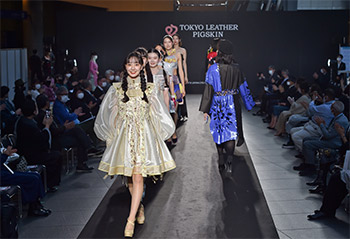 Mr. Yamashita decided his theme as ‘Globalism’. He participated in this event following the previous year. ‘Pigskin has a particular charm with unique bouncy tension and creates remarkably vivid tones, and affordable price allowing high versatility is equally attractive. Since I discovered the surface appearance changes completely according to dyeing techniques, I tried to pursue expressions through profound comprehension of that point,’ commented the designer. Mr. Michail Gkinis, who was born in Greece and studied fashion in London encountered pigskin in the PIGGY’S SPECIAL show ten years ago. He applies pigskin to stoles as ‘pigskin is a highly breathable material, also light and thin. Furthermore, there are myriads of finishing methods, where I can blend in European sense while combining them.’ For this collection, he focused on ‘Individual personality’ and treated finishing both by hand and mechanically, as well as combining multiple techniques such as digital punching, gradation dyeing, pleating by hand and hand painting alongside inkjet printing. Mr. Nakazone presented his collection under the theme; ‘Noble’, ‘with consciousness to express how to complete the collection elegantly.’ The collection was awash with feminine elements; elaborate drapes and details tactfully expressed. Inkjet printing was applied to hide pores and uneven grains of pigskin for a splendid outcome. Although a collection with leather items was the first trial, he visited the production site; ‘My intention was well conveyed in terms of material development. Tokyo being a producing region is also attractive,’ commented the designer.
![INDEX[4] JFW Sustainability Project](images/title_index_04.gif) The project will be continued in the coming edition. From this edition onwards, the <JFW Sustainability Project> has launched. JFW aims to enlighten and promote sustainable textiles through this project reflecting support for activities to promote a sustainable society and global environment protection. The entire corner of the trend theme; ‘Conventional Beauty’ was reserved for sustainable textiles. 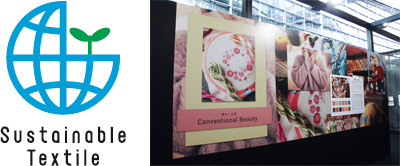 To categorise sustainable textiles, three major categories were set (raw materials, production processes, corporate social responsibility) with seven detailed criteria. Sustainable cards were attached to the corresponding fabrics displayed in the trend corner, while stickers with sustainable icons were indicated on the corresponding fabrics displayed in the INDEX Corner and in each exhibitor’s booth. The result shows 224 pcs. out of 737 pcs. in the TREND/INDEX corners belonged to sustainable fabrics (30%), while 47% of the PTJ exhibitors indicated sustainable icons. Analysis of sustainable textile categories in the TREND CORNER shows; 30 organic raw material entries, 28 recycled raw material entries, 16 biomass-base material entries, six animal care entries, 21 production process-based entries, seven entries free of hazardous materials and ten sustainable corporate social responsibility entries. Although wide-ranging sustainable fabric options were showcased in the largest-scale event of its kind in Japan, the task of increasing consumer awareness of sustainability remains a work in progress. We intend to continue this project and achieve further progress toward the goal of sustainable textiles. ![INDEX[5] JFW Textile Shows in 2021](images/title_index_05.gif) Premium Textile Japan 2022 Spring/Summer 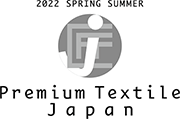
JFW JAPAN CREATION 2022 Premium Textile Japan 2022 Autumn/Winter 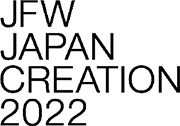
|
||||||||||||||||||||||